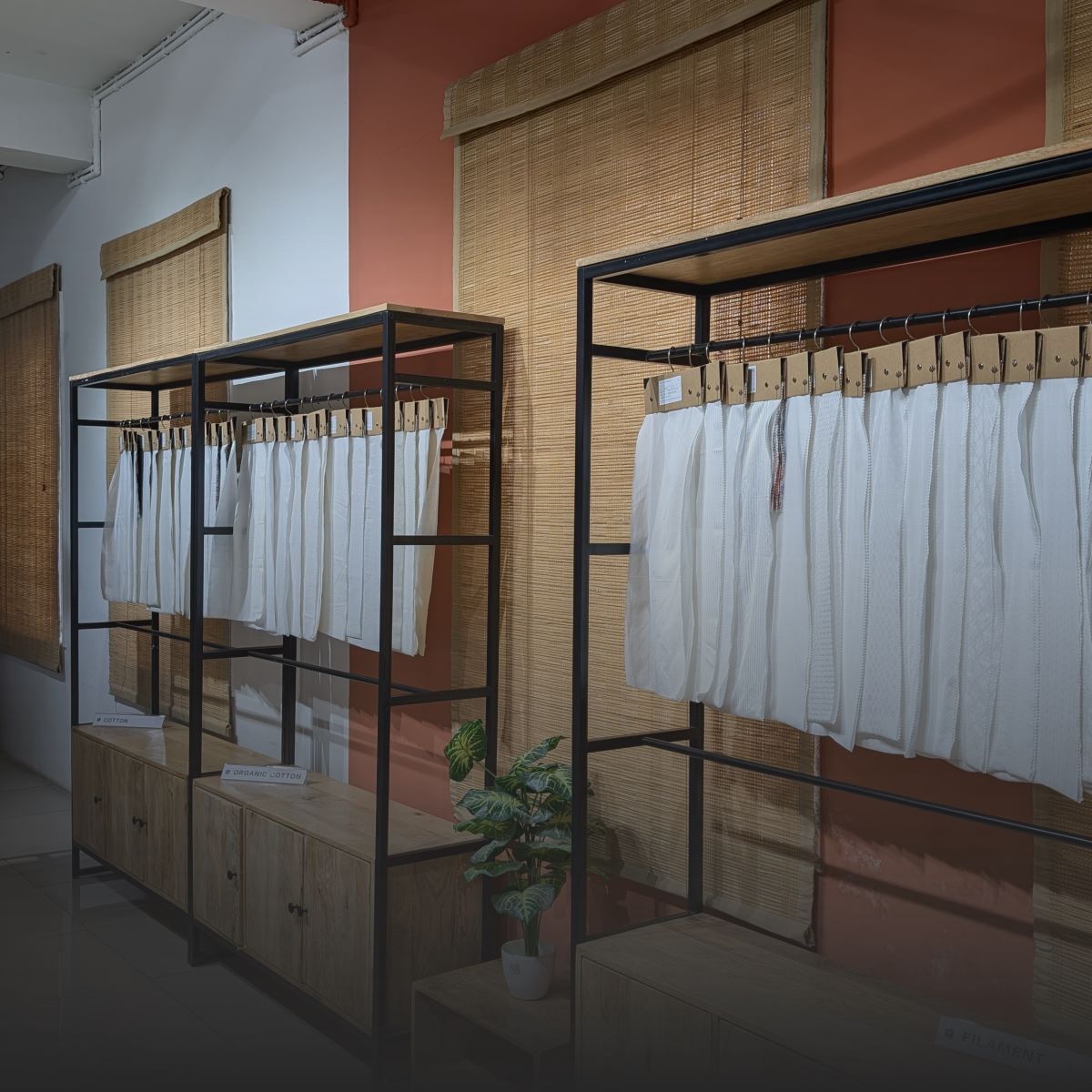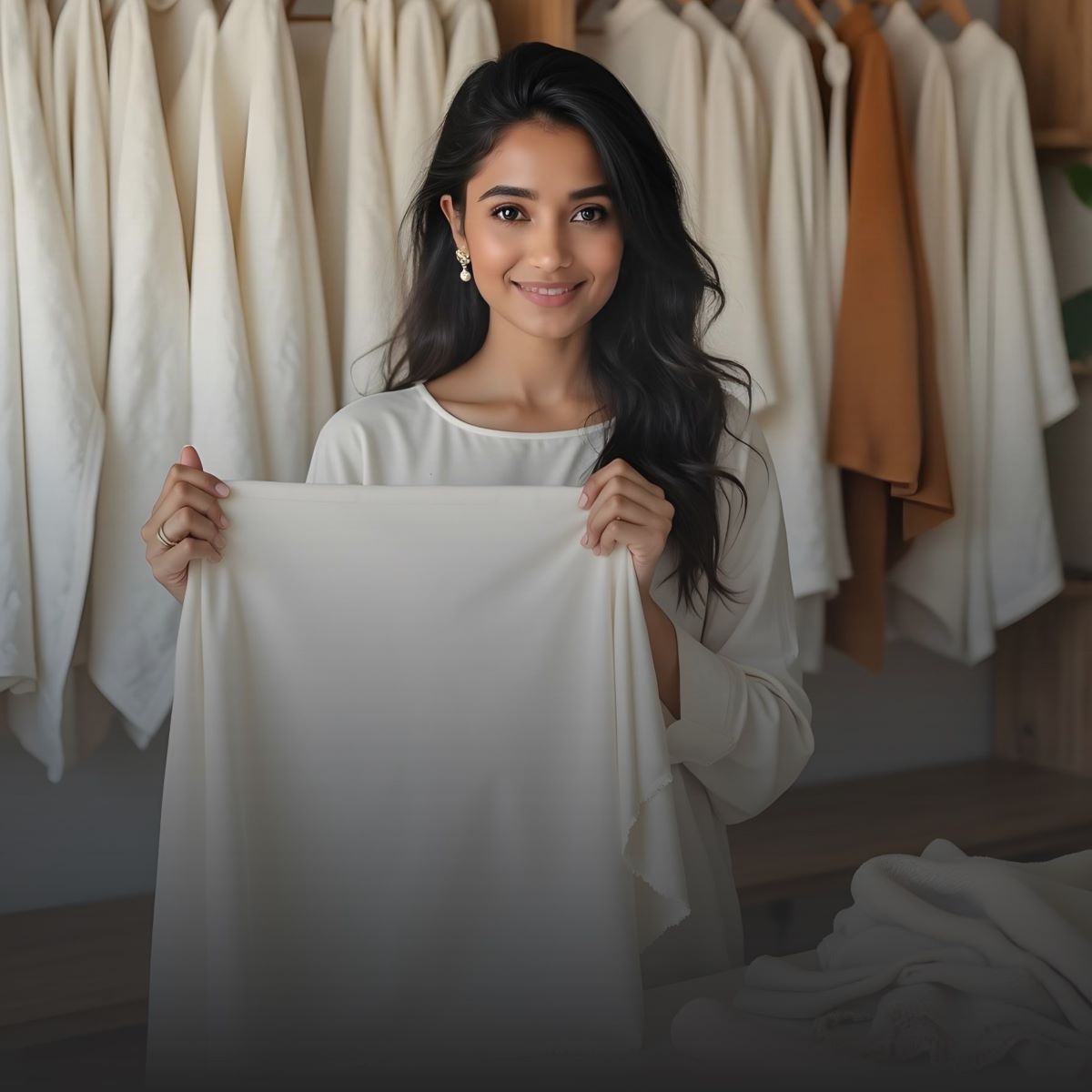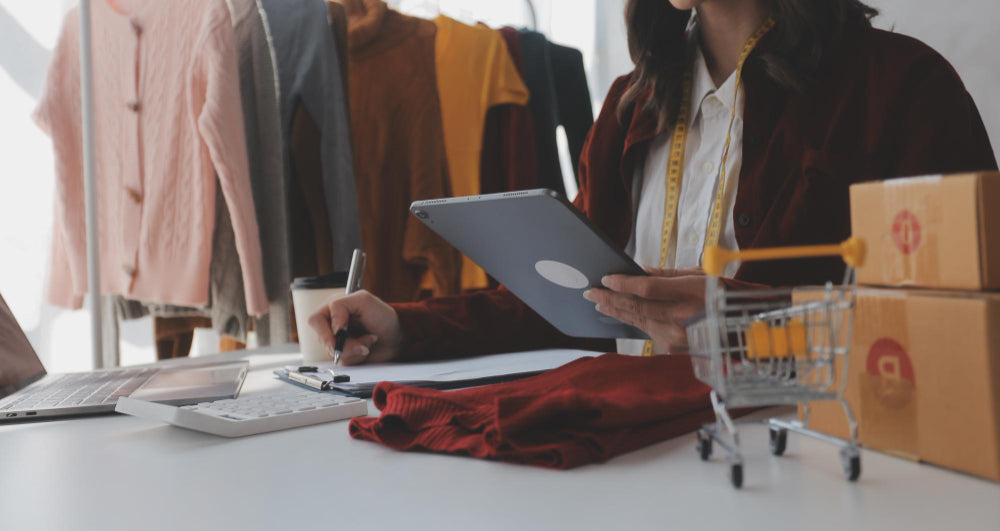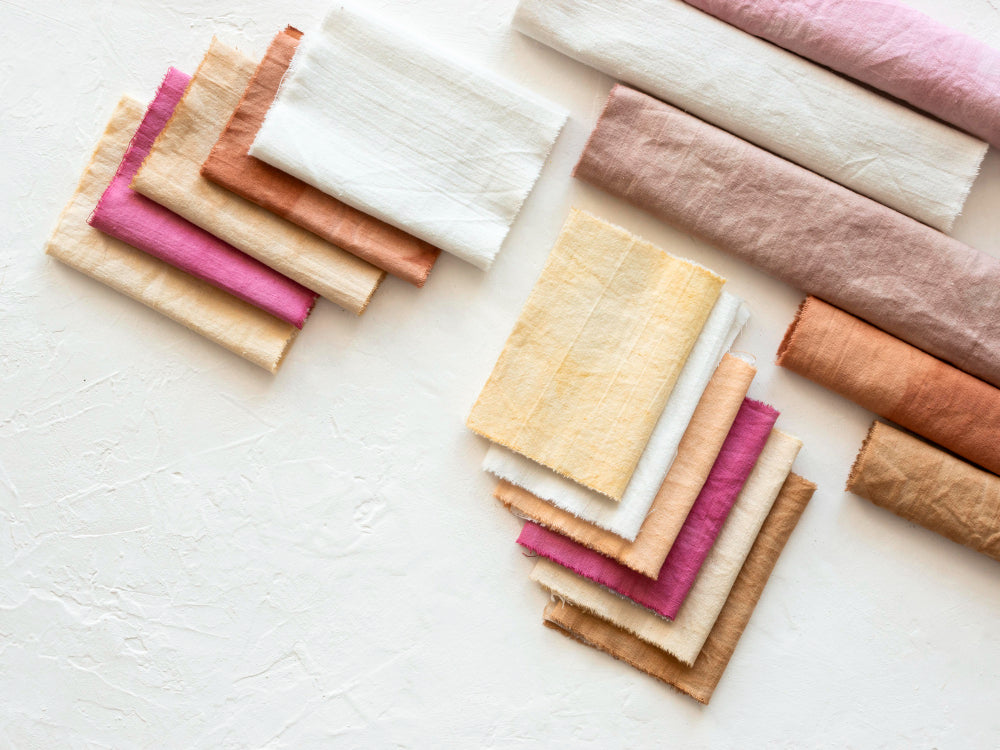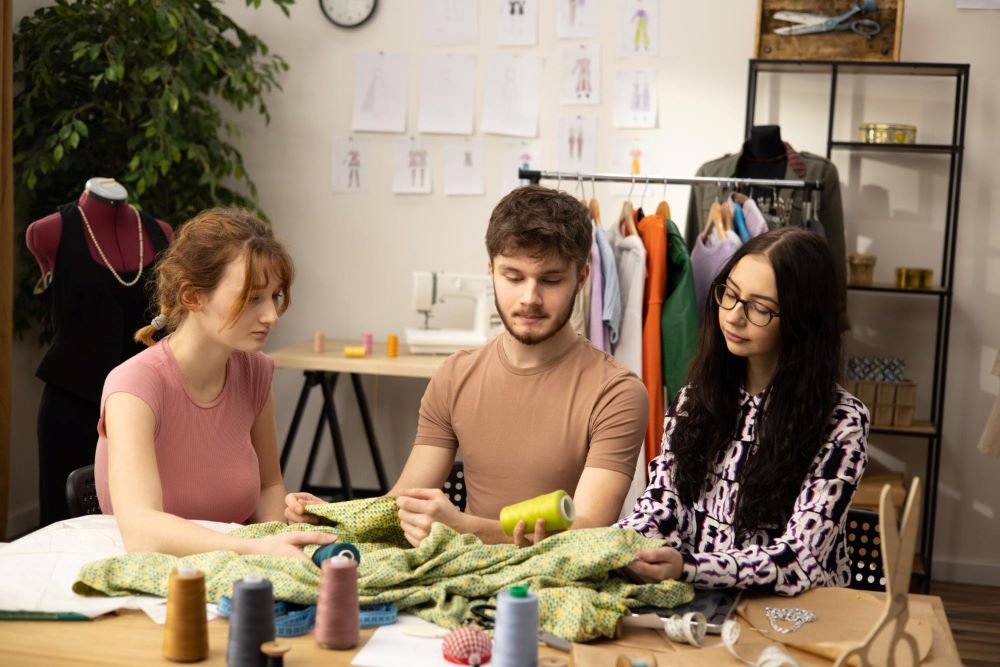In B2B apparel reselling, success hinges not on the volume of clothes sold, but on strategically offering the right styles with intelligent profit margins.
Picture this: you're offering simple yet versatile cotton t-shirts online. They have sales, but the competition on price is fierce, and the margins are razor-thin. Imagine the allure of presenting organic cotton, exclusive printed tees, or intricately hand-woven fabric shirts. While production costs may be a bit elevated, customers are eager to pay double for unparalleled quality – allowing you to enjoy significant profits without doubling your efforts.
Discover the top high-margin apparel categories that can elevate your business. This guide will empower you to select products that maximize profits and enhance brand value while reducing inventory risks.
What Is A High-Profit Margin Product?
A high-profit margin product makes more profit per unit than your cost to source it. Imagine selling $12 custom-printed t-shirts with $11 equipment, raw materials, and labour. The net profit per shirt sold is $1. Keeping costs the same and raising the price to $20 increases your profit margin to $9 per shirt. Your profit margin increased from poor to high.
Why Category Selection Matters
When you target the appropriate segments of the garment market, you:
- Unlock higher profit margins
- Reduce dead stock risks
- Build a stronger brand positioning
- Adapt quickly to market trends
By buying from reputable fabric suppliers USA or widely recognized textile partners, you can be sure of consistent quality at lower costs, which is the basis for long-term growth.
High-Margin Apparel Categories Worth Your Focus

Here are some of the most profitable clothing areas you should think about when making your B2B product strategy:
1. Luxury and Designer-Look Apparel
There is luxury in every little thing, said the French fashion designer. Luxury clothing isn't just sold in high-end shops anymore; it's also a massive market for middle-class people. The world market for high-end clothes will be worth more than $97 billion in 2024, and it's expected to keep growing, especially in the US, China, and the Middle East.
Statement fashion is very popular right now because more people want to buy expensive things, and it's easier to do so online. People think items with high-quality materials, tailored fits, and embroidered features are worth much more.
- Examples to sell: Blazers, tailored dresses, embroidered jackets, designer-inspired coats.
-
Profit potential: Margins between 70%-120% depending on the quality and exclusivity of the fabric.
2. Sustainable and Organic Clothing
Sustainability is now required; it's how things will be in the future. 73% of millennials in the US are ready to pay more for things that are better for the environment. The market for eco-friendly clothes will grow at a compound annual growth rate of 11.3% and reach $367.2 billion by 2029. People who think that someone else will save the Earth are the biggest threat to it.
Customers who care about the environment value honesty, certifications, and stories about the goods they buy. Loyalty and sales go up for brands that use organic materials and colours that don't harm the environment.
- Examples of selling: Organic cotton T-shirts, hemp trousers, bamboo fiber tops, and naturally dyed dresses.
- Profit Potential: Typically, 50%–80% margins for eco-certified clothing.
3. Customized and Private Label Apparel
Customization is not simply a fashion statement; it's changing how stores do business. Over $38 billion will be spent online worldwide in 2024 on personalized goods. People in the USA, especially Gen Z and millennials, want to show themselves through their clothes.
Private label lines or customized merchandise (event, college, or celebrity) give brands control over their image and give customers something they can't get anywhere else. Finding authentic fabrics in your area through fabric sellers USA can help you save a lot of money.
- Examples to sell: Private label hoodies, company uniforms, personalized event tees, capsule collections
- Profit Potential: Margins can soar up to 2x–3x, particularly with limited editions.
4. Loungewear and Sleepwear
Clothing that puts comfort first isn't just a global trend; it's here to stay. $10.5 billion by 2027 is how much the US loungewear market is expected to grow. Sleepwear is right behind it, especially since working from home is becoming more popular and dressing less strictly is becoming more common.
People mostly want premium fabrics like organic cotton, modal mixes, and silk, which lets prices go up.
- Examples to sell: Cotton robes, silk pyjamas, relaxed-fit tees, fleece joggers.
- Profit Potential: 60%–100% markups when using high-grade fabrics.
5. Ethnic and Handcrafted Apparel
Handmade fashion is an example of how small things can create great things. USA shoppers seeking meaning, culture, and individuality are embracing handmade apparel, especially heritage clothing.
Ethnic apparel is expected to generate approximately $984 billion for the global artisan products market in 2025. Handwoven, hand-embroidered, and handmade garments are valued for their human touch, craftsmanship, and tales. Collaboration with cooperatives or artisan organizations boosts ethical branding.
- Examples to sell: Handloom sarees, chikankari kurtas, Kantha jackets, Sanganeri block print dresses
-
Profit Potential: Margins between 80%–150%, thanks to authenticity and limited production runs.
6. Premium Basics
There is a quiet force in premium basics. Some clothes that will always look good are heavyweight t-shirts, sturdy jeans, and structured shirts. The basic market is expected to grow to over $18 billion by 2027 in the US alone. This is because people are shopping for quality over quantity.
What's the secret? To avoid charging more, use better materials (like ring-spun cotton, selvedge denim, or linen mixes) and ensure the fit is perfect.
- Examples to sell: Heavyweight cotton T-shirts, selvedge jeans, premium cotton shirts.
- Profit Potential: Margins ranging from 50%–to 90%, especially with USA-made or eco-certified basics.
Quick Summary Table
|
Category |
Typical Profit Margin |
Why Focus? |
|
Luxury and Designer-Look Apparel |
70%–120% |
Rising aspirational shopping, online luxury boom |
|
Sustainable and Organic Clothing |
50%–80% |
Eco-first buyers paying premiums |
|
Customized and Private Label Apparel |
2x–3x |
Personalized fashion, unique brand identity |
|
Loungewear and Sleepwear |
60%–100% |
Comfort-driven trends, casual lifestyle appeal |
|
Ethnic and Handcrafted Apparel |
80%–150% |
Artisanal appeal, heritage storytelling |
|
Premium Basics |
50%–90% |
Quality-focused buying behavior |
How To Maximize Margins In B2B Apparel Resale

Winning in B2B apparel resale is more than simply what you offer; it's also about how you create your sourcing, branding, and selling tactics, all leading to larger profits.
Here's how innovative businesses regularly increase profits:
Source Smartly and Strategically
Profit starts with sourcing. Working with reputable fabric suppliers USA will help you get high-quality materials at reasonable prices, reducing the number of defective products, refunds, and customer complaints.
Example: If you want to build a brand around eco-friendly loungewear or custom-made basics for your label, getting your organic cotton or bamboo fabrics straight from specialized wholesalers will cut your costs considerably and help you tell a better story.
👉 Tip: Find providers who offer organic, quality essentials and ethnic fabrics in one location. This method simplifies diversification without vendor management. Build A Strong Brand Narrative
When people shop for clothes, they're not merely selecting fabric; they seek significance, dreams, and a sense of community.
Think about creating a brand story that highlights the following:
- Quality craftsmanship.
- Ethical sourcing.
- Personalization or exclusivity.
- Sustainability credentials.
- This emotional connection easily justifies charging more.
People don't buy what you do; they buy why you do it. — Simon Sinek.
Offer Value-Added Services
Small details make a big difference in a crowded market. Adding services to your clothing can turn it from a product to a must-have:
- Customization (names, colours, embroidery)
- Eco-friendly packaging
- Story tags (highlighting artisan stories and sustainable practices)
- Fast shipping or drop shipping options for B2B buyers
Even minor customizations or premium packaging can enable a pricing increase of 10%-25% without substantially raising your costs.
Stay Ahead Of Trends (And Microtrends)
Fashion changes all the time. Always keep an eye on:
- New fabrics, like organic hemp mixes and materials that keep the body at the right temperature.
- Subcultures on the rise include nostalgia wear, quiet luxury, and handmade rebirth.
- Colour trends around the world (Pantone Colour of the Year, seasonal themes)
When you adopt technology early, you can get narrow markets before anyone else and often charge more than the competition.
Optimize Inventory And Pricing With Technology
Using tools for managing supplies and changing prices will help you:
- Don't keep too many slow-movers on hand.
- Change prices based on what people want
- Offer sets, like shirts and scarves, together to get people to spend more on average.
With data-driven selling, margins can increase by 15% to 20% compared to set it and forget it models.
Strategies, not shortcuts, are what build margins. You can not only stay in business in the B2B clothing resale market if you focus on sourcing, branding, value, and tech-enabled processes but also take it over.
Final Thoughts

Establishing a successful B2B apparel business goes beyond merely increasing sales; it requires focusing on more strategic selling practices.
By concentrating on lucrative and sought-after categories while strategically sourcing from reliable fabric suppliers in the USA and globally verified manufacturers, you position yourself for enduring and scalable success.
Remain true to yourself. Maintain a concentrated approach. Keep an eye on your margins and brand as they expand.
FAQs
1. Which Types Of Apparel Have The Highest Profit Margins In B2b Resale?
In B2B fashion resale, custom apparel, sustainable clothing, and ethnic handmade clothing top the list of high profits. Their strong consumer demand and unique positioning allow businesses to earn margins ranging from 50% to 150% when sourced smartly and marketed well.
- Custom apparel: 50-80% margin.
- Sustainable fashion: 50-80% margin.
- Ethnic wear: 80-150% margin.
- Private label: 50-100% margin.
2. Is Kid's Clothing Profitable For A B2B Reseller In The Usa?
Absolutely! Kids apparel in the USA is a fast-moving, frequently purchased category. Parents constantly need new clothes for growing kids, so resellers get steady revenue streams and an average of 40-50% margins, especially when they offer organic or personalized options.
- More frequent purchases
- Organic styles preferred
- Lighter, easier shipping
- Personalized babywear trend on the rise
3. How Important Is Sustainability In Apparel Resale Today?
Sustainability is no longer optional – it's a core buying factor, especially among Gen Z and millennials. Eco-conscious shoppers are willing to pay more for ethical fashion, making sustainable apparel a powerful way to stand out and charge a premium price.
- Gen Z prefers eco-brands
- Storytelling builds brand trust
- Higher margins on green fashion
- Growing market year over year
4. Which Cities In The Usa Are Best For Selling Premium Basics Or Custom Apparel?
U.S. Certain cities in the U.S. naturally prefer premium, minimalist, and customized clothing due to their urban, trend-setting consumers. Focusing your resale efforts in these hotspots can increase brand value and boost sales.
- New York: Fashion Capital
- Los Angeles: Casual Luxury Trend
- Austin: Creative Custom Style
- San Francisco: Sustainable Fashion Hub
- Seattle: Premium Basics Market
5. Where Can I Source Fabric For High-Margin Apparel In The Usa?
Finding the right fabric supplier is crucial to maximizing margins in apparel resale. Top U.S. wholesale fabric vendors offer organic, sustainable, premium, and artisan fabrics at competitive rates, ensuring product quality while keeping production costs efficient.
- Organic Fabric Suppliers USA
- Sustainable Fabric Sourcing
- Artisan Fabric Wholesalers
- Custom Fabric Manufacturing Options
6. Is Custom Print-On-Demand Apparel Profitable For B2b Resellers?
Custom print-on-demand (POD) apparel is highly profitable for B2B resellers, especially in niche markets and limited-edition collections. By partnering with a reliable fabric supplier in the USA or a custom apparel sourcing platform, you can ensure quality materials for your designs, reduce upfront inventory costs, and launch personalized collections at premium prices.
- No inventory holding costs
- Rapid trend adaptation
- High-profit custom designs
- Easy scalability across different styles
